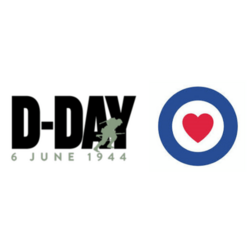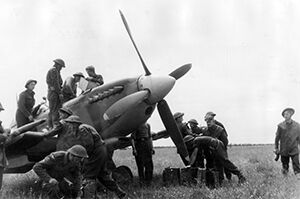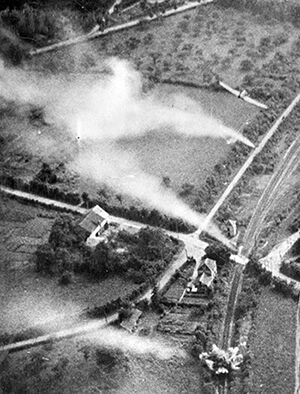
RAF's D-Day involvement
On the 6 June 1944, Allied Forces launched the invasion of German-occupied western Europe, one of the greatest operations of all time, the D-Day Normandy landings.

The historic assault, an unprecedented military and logistic endeavour, was carried out along the Normandy coastline of France – the American troops assaulting the beaches codenamed Utah and Omaha, and the forces under British control landing on Gold, Juno and Sword.
Planning for the invasion
Preparations and planning for this invasion, however, had been going on for months and before anyone set foot on the beaches on 6 June 1944 Bomber Command had already lost almost 300 aircraft and 2,000 men (1,500 killed) attacking invasion targets.
Air power was key to success, indeed in the two months previous RAF Bomber Command had been successfully forming the 'ring', attacking road and rail links to the proposed battle area. And the strategic air offensive against Germany, conducted by both RAF and American bomber forces had shifted the battle to the skies above the Third Reich, forcing the Luftwaffe on to the defensive. As such when the Allied Normandy beach landings took place there was, initially, very little the Luftwaffe could do in response.
The targets

As D-Day approached the nature of the targets became more tactical, including coastal gun emplacements and radar installations, and on the ‘day of days’ Allied airmen bombed gun emplacements a few hours ahead of the beach landings, attacked transportation links, towed gliders, dropped parachutists, carried out deception operations, strafed enemy transports, and reconnoitred the developing battle.
Coastal Command aircrews patrolled the approaches to Normandy, protecting against enemy submarines and shipping, and Air-Sea Rescue crews plucked fallen airmen from the 'drink'.
On D-Day over 11,590 Allied aircraft of all types were involved, 5,656 of these were Royal Air Force. What is often forgotten is that over 1,800 RAF personnel and 456 vehicles landed on the beaches and by 9 June, this had increased to over 3,500 RAF personnel and 815 vehicles in Normandy, working on airfield construction, aircraft servicing and forward controlling.
In the following days, as the German Air Force attempted to transfer aircraft to the battle area, the Allied fighter pilots patrolled the perimeters establishing an aerial 'umbrella' and the bombers cratered the local enemy airfields – in addition to the continued bombardment of rail and road centres. While maintaining the air superiority the fighter pilots were able to exploit their situation, flying armed reconnaissance in the battle area, firing rockets, dropping bombs, and unleashing their machine guns.
At times the land battle ground to a halt and the Allied bombers were called in to break the stalemate. The Allies exploited their local air superiority to the full.
The enemy has complete command of the air over the battle zone and up to about 100 kilometres behind the front and cuts off by day almost all traffic on roads or by-ways or in open country.
Manoeuvre by our troops on the field of battle in daylight is thus almost entirely prevented, while the enemy can operate freely… Troops and staff have to hide by day in areas which afford some cover… Neither flak nor the Luftwaffe seems capable of putting a stop to this crippling and destructive operation of the enemy's aircraft.
Field Marshal Erwin Rommel, 12 June 1944
The success of the D-Day landings opened the way for the liberation of Western Europe. Within a year the Nazis were defeated and the war in Europe was over.
Quotes and images courtesy of D-Day: Bomber Command Failed to Return by Fighting High Publishing, www.fightinghigh.com.